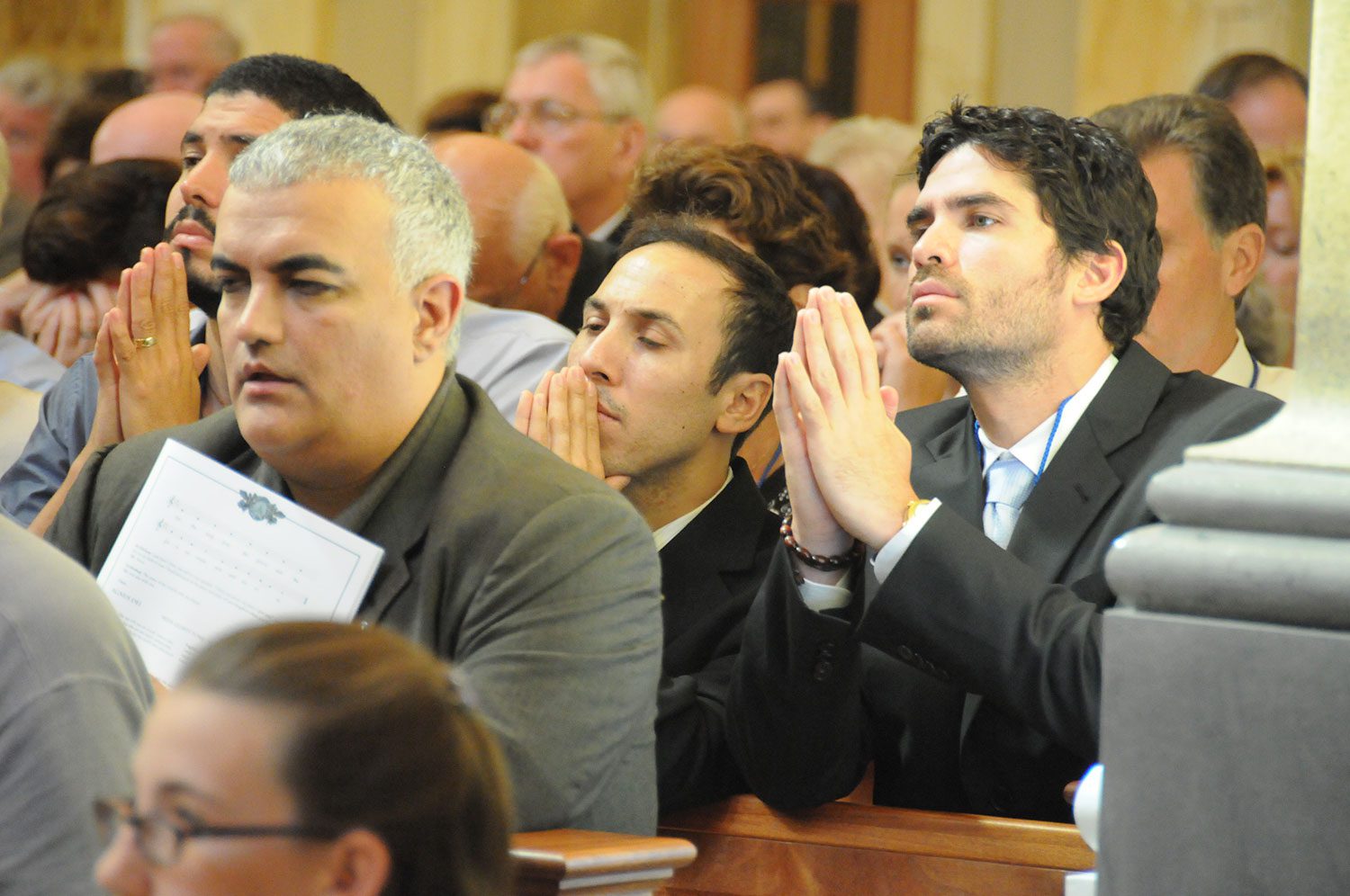
In Part 1, we saw that Letter to the Bishops of the Catholic Church on Some Aspects of Christian Meditation (Orationis formas) addresses modern errors in prayer, regardless of their origin. Therefore, the criticisms in this document from the Congregation for the Doctrine of the Faith (CDF) can be applied to Centering Prayer, even assuming that Centering Prayer was not derived from eastern religions.
Secondly, we saw that Orationis formas defines prayer as “a personal, intimate and profound dialogue between man and God” (no. 3). Centering Prayer does not acknowledge an essential difference between God and man. It proposes no dialogue, only awareness. Therefore, by the standards of the CDF it is not Christian prayer.
Now let’s continue comparing the rest of the document to the teachings of Fr. Keating and other leaders in the Centering Prayer movement. As in this entire series, quotes from Church documents are highlighted in purple. Quotes from Centering Prayer advocates are highlighted in green.
Prayer belongs to the Church
Numbers 6 and 7 of Orationis formas speak of the connection between prayer and revelation, and even to the Church’s teaching authority. Here are some snippets:
“There exists, then, a strict relationship between Revelation and prayer…
The prayer of Jesus has been entrusted to the Church…
The Christian, even when he is alone and prays in secret, is conscious that he always prays for the good of the Church in union with Christ, in the Holy Spirit and together with all the Saints.”
Now, Centering Prayer advocates would never simply state that the Church has no business regulating their method of prayer. Nor would they claim to be outside the communion of saints. So why do I quote from this passage?
Centering Prayer is connected with dissent from fundamental Church teachings. Part 1 showed how Fr. Keating teaches erroneous (and peculiar) doctrine regarding Original Sin, Baptism, and the Eucharist.
Here are some other examples:
Centering Prayer is taught and practiced by many who advocate for women’s ordination, such as “womanpriests” Suzanne Dunn, Ruth Lindstedt, and Jeanette Love. (Many other “womenpriests” say they teach about “contemplative prayer,” which I imagine is mostly a euphemism for Centering Prayer in this context).
Indifferentism is rampant in Centering Prayer teaching. Fr. Keating and his “disciple” David Frenette say openly that the differences between Christianity and Buddhism are largely culturally conditioned, rather than real disagreement. Interestingly, they don’t say this on the Contemplative Outreach website, which caters to Catholics.
Centering Prayer is also regularly taught alongside New Age practices such as the Enneagram or Yoga (see the Message from the President of Contemplative Outreach in this link).
When the leaders of the Centering Prayer movement promote a myriad of theological errors, can they really claim that they pray in communion with the Church?
Ancient, New Age errors
The CDF writes about the errors the early Church Fathers combated:
“In combating the errors of pseudognosticism the Fathers affirmed that matter is created by God and as such is not evil.” (OF no. 8)
Centering Prayer has a gnostic element. The Fathers and saints teach that the created world falls short of God’s greatness. They teach that we cannot fully comprehend God with our intellect. But Centering Prayer goes well beyond this.
Fr. Thomas Keating misquotes Mark 8:34, writing in Open Mind, Open Heart:
“Unless you deny your inmost self and take up the cross, you cannot be my disciple.”
He adds the word inmost, then interprets it for the reader:
“Denial of our inmost self includes detachment from the habitual functioning of our intellect and will, which are our inmost faculties. This may require letting go of not only ordinary thoughts during prayer, but also of our most devout reflections and aspirations insofar as we treat them as necessary means for going to God.” (Open Mind, Open Heart, 20th Anniversary Edition, p. 13)
In other words, for Fr. Keating, we don’t need reflections in order to grow close to God. We don’t need aspirations. We don’t need to use our intellect or will or imagination–the very faculties that distinguish humans from brute beasts. This teaching is pseudognosticism.
A Christian view of humanity acknowledges that our thoughts, feelings, aspirations, and imaginings can only get us so far in the spiritual life. After that, we need a special help from God. That is, once we have exhausted what we can do with the natural human gifts God gave us when He created us, working with the help of ordinary grace, He gives us supernatural contemplation which we could never obtain in any other way.
We do not prepare for the greater gifts by rejecting the lesser gifts. We prepare for the greater gifts by making good use of the gifts we already have.
The CDF addresses this question more fully later:
“The meditation of the Christian in prayer seeks to grasp the depths of the divine in the salvific works of God in Christ, the Incarnate Word, and in the gift of his Spirit. These divine depths are always revealed to him through the human-earthly dimension. Similar methods of meditation, on the other hand, including those which have their starting-point in the words and deeds of Jesus, try as far as possible to put aside everything that is worldly, sense-perceptible or conceptually limited. It is thus an attempt to ascend to or immerse oneself in the sphere of the divine, which, as such, is neither terrestrial, sense-perceptible nor capable of conceptualization.” (OF no. 11)
These “similar methods” are among the erroneous ones the CDF is cautioning us against. They try to set aside everything earthly and sense-perceptible out of a mistaken idea that this will lead to immersion in what is beyond our senses–the Divine, or God. This exactly describes the teaching of Fr. Keating and his colleagues.
Next time, we’ll look at further errors in prayer addressed by the CDF.

2 thoughts on “Centering Prayer and the CDF, Part 2”